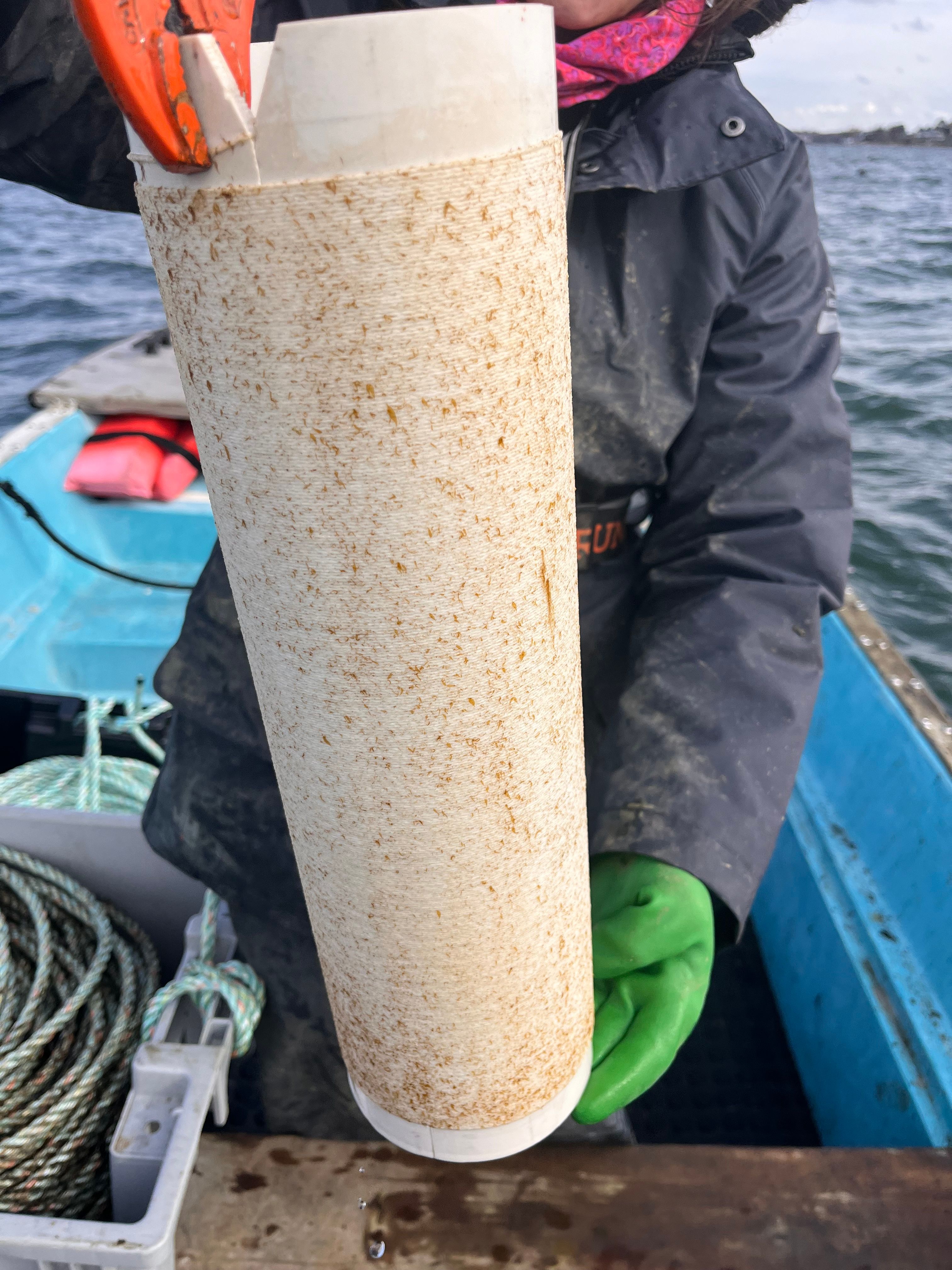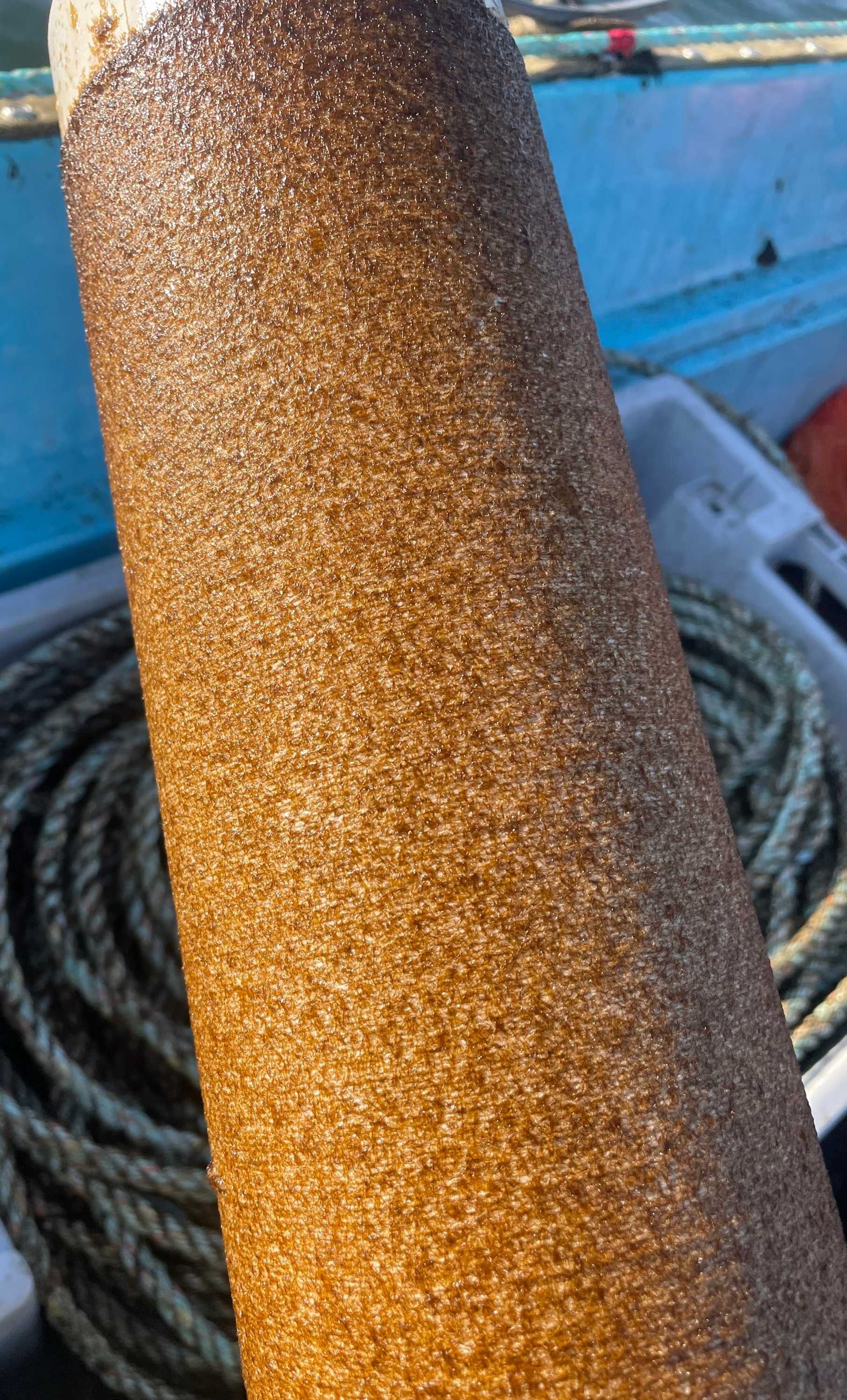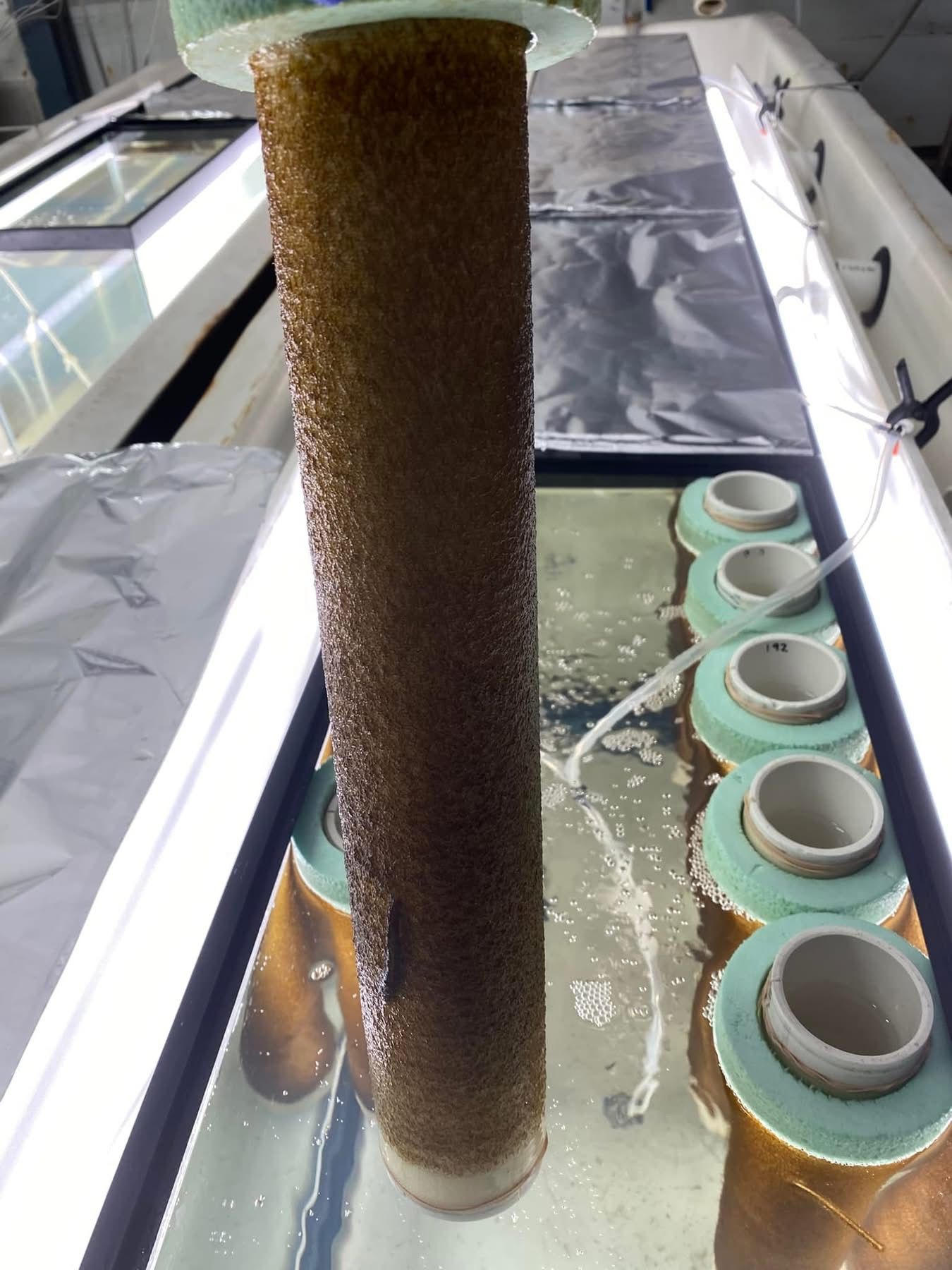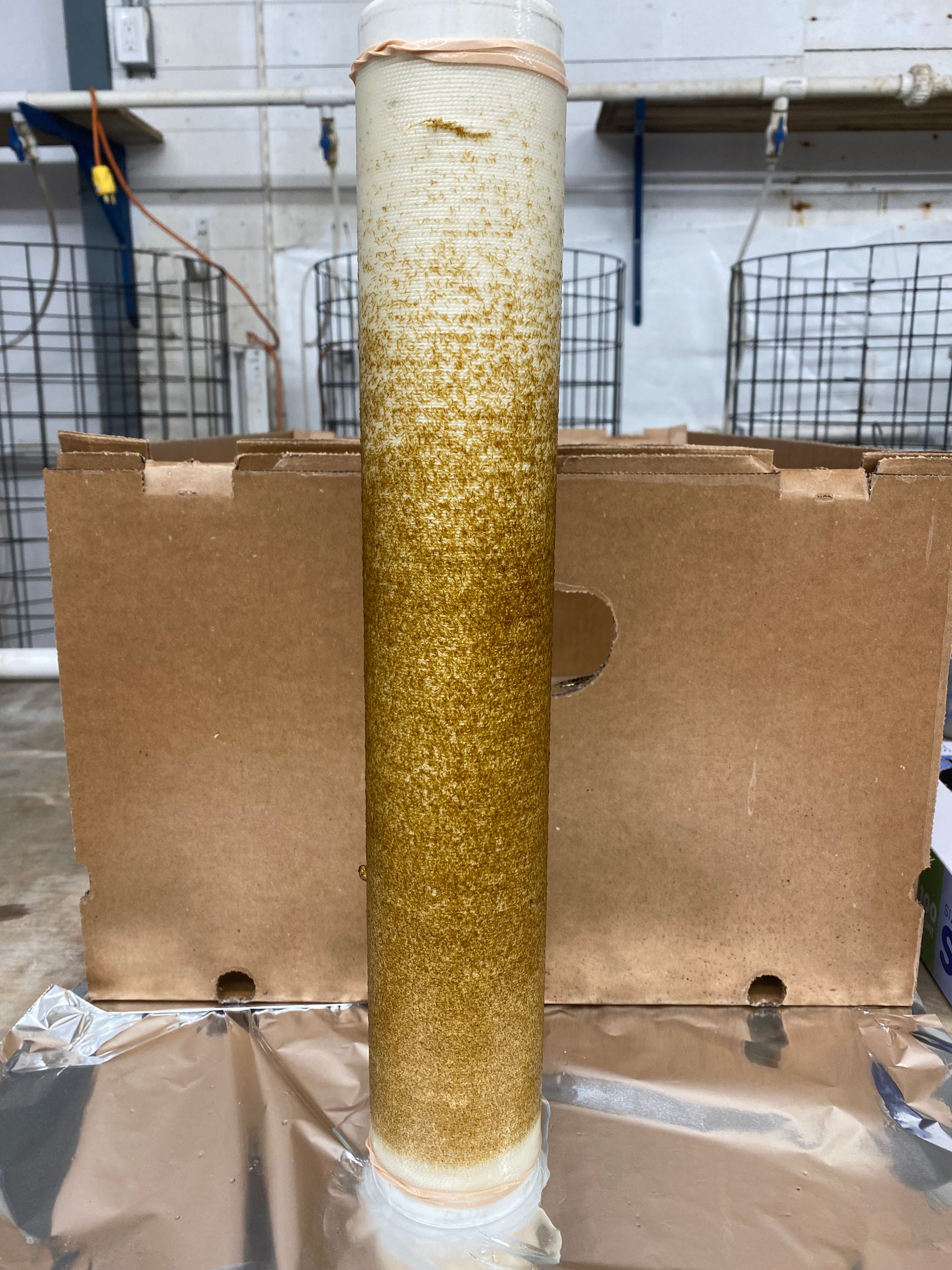Season debrief
-
How did the nursery season go this year? Would be great if folks could share some images of their best spool and a spool that didn't grow well and share reflections on one thing you did really well and one thing you learned this season.
Here are a couple pictures from the GreenWave nursery. Most of our spools were very consistent and excellent quality--here's an example of a strong one that was seeded using gametophytes:
We are really pleased with the deep brown coloration, even coverage, and absence of any diatoms or green algae.
This is an experimental spool that we were less impressed by, it was seeded using sporophytes that were induced from our gametophyte collection prior to painting onto the spool:
The coverage is spotty and growth appears uneven. We will be tracking the growth over the course of the season to see if the sporophyte spool catches up.

@toby_sheppardbloch Hi Toby, Did the same amount of gametophyte biomass contribute to each of these types of spools? And equal amount of females and males? Or were these mixed sex cultures with indeterminate ratio of m:f?
@scott_lindell We are using mixed sex cultures with unquantified m:f ratios. The uneven spool was painted with induced sporophytes that were counted to measure density while the other spool was painted with weighted gametophytes, so can't make an apples to apples comparison of density.
@toby_sheppardbloch Induced sporophytes typically come from a known biomass of gametophytes which could possibly allow an "apples to apples" comparison with uninduced gametophytes for reproductive efficiency at least. What average size were the juvie sporophytes at painting?
@scott_lindell We are using mixed sex cultures with unquantified m:f ratios. The uneven spool was painted with induced sporophytes that were counted to measure density while the other spool was painted with weighted gametophytes, so can't make an apples to apples comparison of density.
@toby_sheppardbloch Sharing our photos of our good vs not-so-good spools. Both were seeded by spore release into settling tubes, however I did have several spools that only grew sporophytes on half the spool and I don't know why. The conditions in the tanks were as identical as possible, no contaminants were observed, spool prep was the same on all spools, and yet 10% of my spools grew only on half.


@elizabeth_savage19 Were both those spools inoculated with the same spore release/density?
@toby_sheppardbloch could light intensity have played a role? Maybe too bright on the top for early sporogenesis?
@toby_sheppardbloch they were both inoculated with 7500 cells during a spore release. These spools came from different sorus material, but I’m not sure that would cause this half-set.
@scott_lindell the cells were all released into dark settling tubes for 24 hours. Once released into the tanks, the lighting was 15umols on top and bottom, using side-lighting. The spools were spun 1/4 turn every day and flipped every 4-5 days. My first thought was temperature, since I have seen this in spools inoculated without aeration, so they were colder on the bottom and warmer at the top. I have since always used air stones to circulate the water for an even temp throughout. I also considered an issue with the string, but they were all holdfast string and handled with gloves. I also considered nutrient dispersement, if the F/2 floats or settles, but again it only happened in 10% of the spools and they all used the same nutrients, which were mixed into the saltwater the same way.
@elizabeth_savage19 Were both those spools inoculated with the same spore release/density?
@toby_sheppardbloch Induced sporophytes typically come from a known biomass of gametophytes which could possibly allow an "apples to apples" comparison with uninduced gametophytes for reproductive efficiency at least. What average size were the juvie sporophytes at painting?
@toby_sheppardbloch could light intensity have played a role? Maybe too bright on the top for early sporogenesis?
@toby_sheppardbloch they were both inoculated with 7500 cells during a spore release. These spools came from different sorus material, but I’m not sure that would cause this half-set.
@scott_lindell the cells were all released into dark settling tubes for 24 hours. Once released into the tanks, the lighting was 15umols on top and bottom, using side-lighting. The spools were spun 1/4 turn every day and flipped every 4-5 days. My first thought was temperature, since I have seen this in spools inoculated without aeration, so they were colder on the bottom and warmer at the top. I have since always used air stones to circulate the water for an even temp throughout. I also considered an issue with the string, but they were all holdfast string and handled with gloves. I also considered nutrient dispersement, if the F/2 floats or settles, but again it only happened in 10% of the spools and they all used the same nutrients, which were mixed into the saltwater the same way.